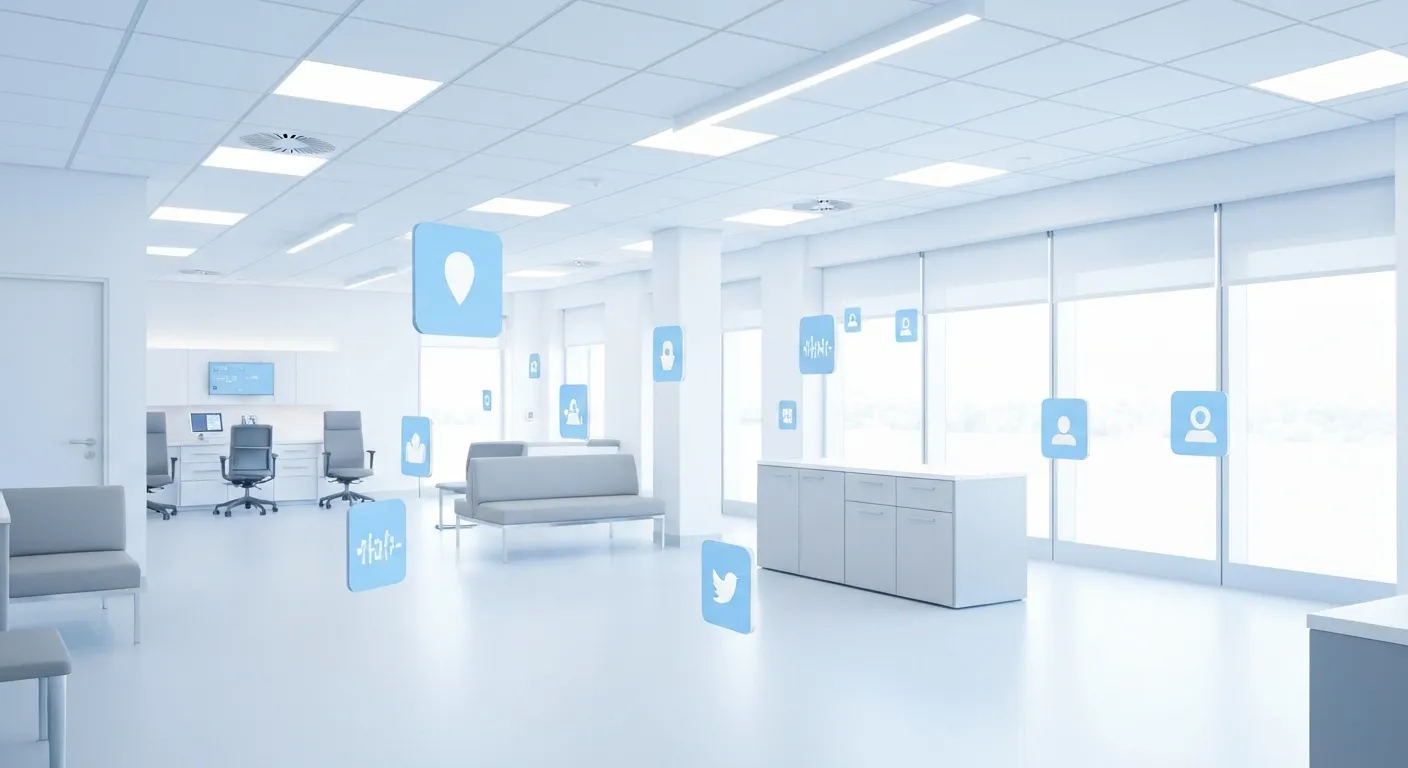Navigating the Digital Frontier of Healthcare Marketing
Healthcare organizations are uniquely positioned to leverage social media management tools tailored specifically to their industry's needs. These tools not only streamline engagement and content dissemination but also ensure strict adherence to regulatory standards. This article explores the landscape of social media management solutions designed for healthcare marketers, highlighting features, strategies, platform effectiveness, compliance considerations, successful campaigns, and emerging trends shaping the future of digital healthcare marketing.
Understanding Social Media Management Tools Tailored for Healthcare Marketing
What are social media management tools tailored for healthcare marketing?
Healthcare-specific social media management tools are specialized platforms created to help healthcare organizations effectively handle their social media presence while adhering to strict regulatory standards. These tools are designed to streamline tasks such as planning, scheduling, monitoring, and analyzing social media content.
A primary purpose of these tools is to allow healthcare providers to engage with their communities, share valuable health information, and build trust with their audiences. They include functionalities that aid in managing content across multiple platforms, ensuring that messaging complies with privacy laws like HIPAA.
Key features often include content scheduling, social listening, and analytics. Scheduling tools help organize posts to optimize timing and reach. Social listening functions allow organizations to monitor brand mentions, audience sentiment, and trending health topics, ensuring they stay responsive and relevant.
Furthermore, analytics features enable measurement of campaign performance, helping teams understand what resonates best with their audiences. Some healthcare-specific tools also incorporate compliance management, such as obtaining patient consent, moderating content, and managing secure communication channels.
Examples of tools with healthcare-focused features
Several platforms are tailored to meet the unique needs of healthcare marketing. For example:
| Tool Name | Core Features | Healthcare Focus | Additional Benefits |
|---|---|---|---|
| Hootsuite | Scheduling, social listening, analytics | HIPAA-compatible, compliance tools | Multi-layer approval workflows, ROI tracking |
| Sprout Social | Monitoring, content publishing, analytics | Patient engagement, reputation management | Integration with EHR systems, sentiment analysis |
| SocialClimb | Paid advertising, review management, compliance | HIPAA compliance, predictive targeting | Real-time KPIs, automation, multi-channel campaigns |
| MarketBeam | Campaign automation, compliance, reporting | Regulatory adherence, outreach | User-friendly interface, employee advocacy |
These tools support healthcare marketing efforts by ensuring content quality, regulatory compliance, and audience engagement. They are vital for health brands aiming to educate, inform, and connect in an increasingly digital world.
Key Features and Benefits of Healthcare-Specific Social Media Tools
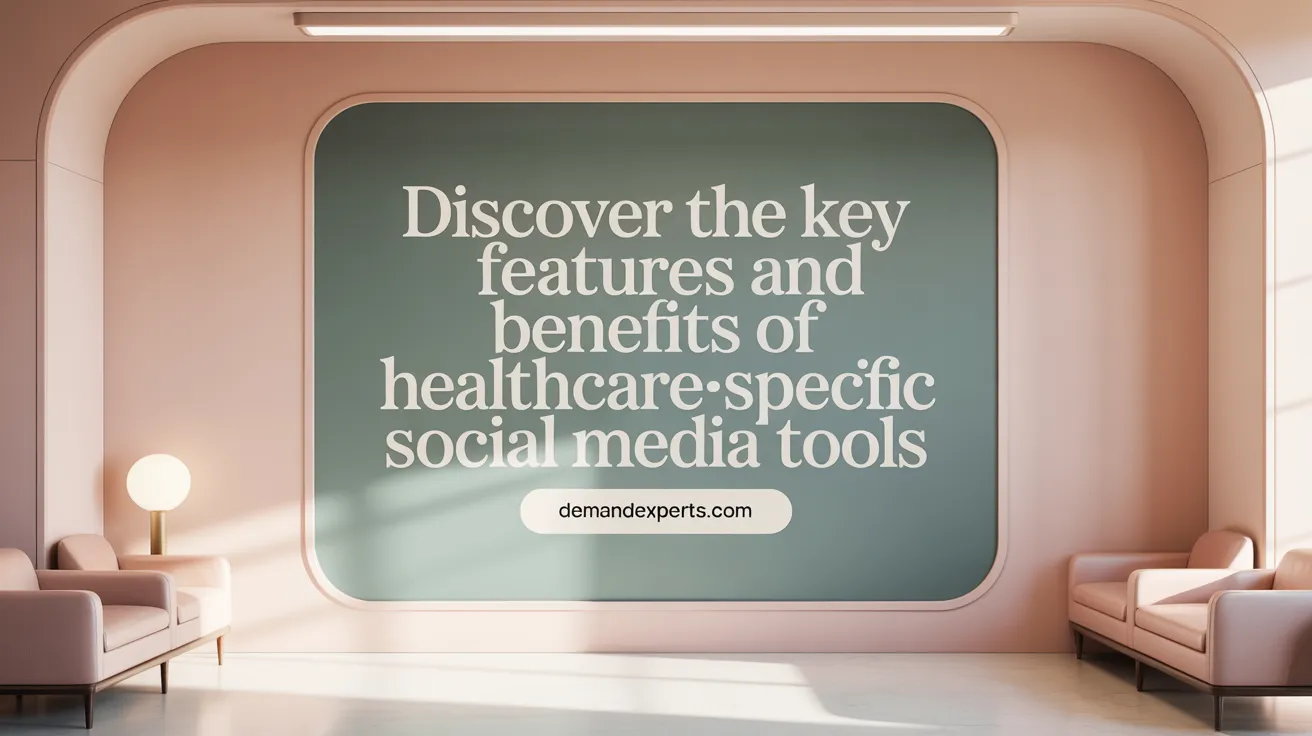
What features and benefits do healthcare-specific social media management tools offer?
Healthcare organizations use specialized social media tools to navigate the complex landscape of patient privacy, regulatory compliance, and effective communication. These platforms provide robust features designed specifically for healthcare needs.
First and foremost, compliance is integral. These tools ensure adherence to regulations like HIPAA, FDA, and FTC guidelines, protecting patient data and avoiding legal repercussions. They include functionalities such as approval workflows, audit trails, and security measures that help organizations stay within legal bounds while sharing health information.
Content creation and scheduling are streamlined through user-friendly interfaces. Healthcare teams can produce engaging graphics, videos, and educational materials with tools like Canva, and plan their posting schedules ahead of time. Approval workflows allow multiple personnel to review content before publishing, ensuring accuracy and compliance.
Social listening and sentiment analysis features enable organizations to monitor conversations around their brand, track public opinion, and quickly address misinformation or health concerns. These insights facilitate timely responses, support crisis management, and help shape public health campaigns.
In addition, these tools support influencer management and crisis communication efforts. Collaborating with health influencers amplifies messaging, while rapid response features help mitigate negative publicity or misinformation.
The overall benefits extend beyond compliance and content management. Healthcare-specific tools promote higher patient engagement and trust through targeted, relevant content. They also enhance brand reputation by allowing organizations to participate actively in health conversations, share success stories, and provide valuable educational content.
| Feature | Purpose | Additional Details |
|---|---|---|
| Compliance features | Ensure legal adherence | HIPAA, FDA, FTC protocols, approval workflows, audit trails |
| Content creation & scheduling | Efficient content planning and publishing | Graphics, videos, approval processes |
| Social listening & sentiment | Monitor public conversations and track brand perception | Trend analysis, rapid response tools |
| Influencer & crisis management | Collaborate with influencers, manage emergencies | Campaign tracking, reputation control |
| Engagement & brand trust | Build relationships with patients and the community | Educational content, success stories, transparency |
By leveraging these specialized features, healthcare providers can create meaningful engagement, ensure regulatory safety, and build stronger trust with their communities.
Strategic Best Practices for Healthcare Social Media Marketing

What strategies and best practices should healthcare organizations follow for social media marketing?
Healthcare organizations can maximize their social media impact by adopting a strategic approach that combines accurate health information with engaging storytelling. Developing a comprehensive, data-driven strategy involves selecting the right platforms where their target audiences are most active, such as Instagram, TikTok, Facebook, or LinkedIn.
It is vital to ensure HIPAA compliance throughout all activities. This includes staff training on privacy rules, careful handling of patient information, and clear policies that prevent the sharing of protected health information without consent. Adding disclaimers and monitoring content regularly are also crucial to maintain regulatory standards.
Utilizing analytics tools helps healthcare marketers track campaign performance, audience engagement, and overall ROI. These insights allow continuous refinement of tactics, ensuring content remains relevant and effective.
Incorporating multimedia content like videos, infographics, and high-quality graphics enhances understanding and retention of health messages. During health crises or awareness campaigns, visual content can significantly increase reach and impact.
Engagement with patients is essential. Responding to inquiries, collecting feedback, and sharing patient testimonials humanize the healthcare organization, fostering trust and loyalty.
To measure success, organizations should track key metrics such as engagement rates, click-throughs, and conversions. This data-driven approach helps optimize campaigns for better reach and effectiveness.
In summary, a strategic, compliant, and multimedia-rich social media presence, combined with active patient engagement and continuous performance evaluation, is critical for healthcare organizations aiming to build credibility and connect meaningfully with their audiences.
Selecting Effective Social Media Platforms for Healthcare
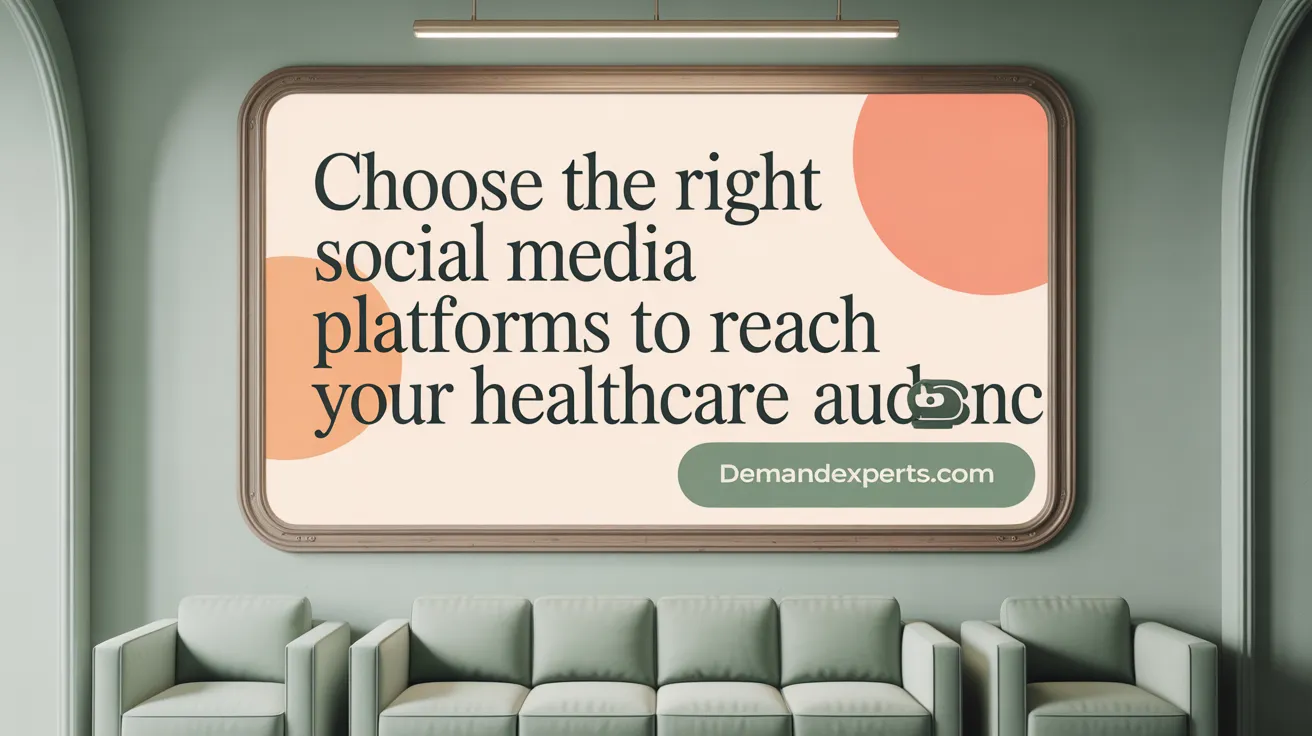
Which social media platforms are most effective for healthcare organizations?
Healthcare organizations need to choose their social media channels based on their specific goals and target audiences. Each platform offers unique advantages that can help fulfill different communication and marketing objectives.
Facebook is a versatile tool, highly effective for local engagement and building trust within communities. It allows healthcare providers to share success stories, promote events, and manage reviews, making it ideal for fostering patient relationships.
Instagram leans heavily on visual content. It is perfect for humanizing healthcare brands by sharing images of daily operations, partner collaborations, and patient stories. Its features support engaging graphics, videos, and influencer partnerships that appeal especially to younger demographics.
LinkedIn stands out for professional networking, B2B marketing, and recruiting. It provides a platform to showcase expertise, publish research updates, and connect with industry professionals and organizations.
YouTube offers an excellent avenue for educational content, including videos explaining procedures, sharing patient testimonials, and clinician talks. This visual medium increases authority and boosts search visibility.
TikTok is rapidly gaining traction for reaching younger audiences via short-form, engaging videos focused on health tips, myth-busting, and wellness trends. It is especially effective for topics like mental health, pediatric care, or general wellness.
| Platform | Strengths | Audience Focus | Suitable Content Types | Best Use Cases |
|---|---|---|---|---|
| Local outreach, community trust, reviews | All age groups, especially adults and seniors | Stories, live videos, reviews | Patient engagement, community events | |
| Visual storytelling, humanizing brands, partnerships | Younger audiences, visual content lovers | Photos, reels, influencer collaborations | Patient stories, health tips, brand awareness | |
| Professional networking, research, recruiting | Healthcare professionals, B2B audiences | Articles, research summaries, job postings | Recruitment, industry leadership | |
| YouTube | Educational, testimonials, procedural explanations | Broad demographic, health consumers | How-to videos, patient success stories | Patient education, professional training |
| TikTok | Short, engaging health content, trends participation | Younger audiences, trend followers | Short videos, health challenges | Wellness topics, mental health awareness |
To maximize their online presence, healthcare providers should integrate these platforms into their marketing strategies by producing high-quality, targeted content tailored for each channel. Continuous analysis of performance metrics can guide content refinement, ensuring outreach efforts are impactful.
Navigating Regulatory Considerations in Healthcare Social Media Management
What are the regulatory considerations and compliance requirements in healthcare social media management?
Managing social media effectively within healthcare settings requires careful attention to various regulations designed to protect patient rights and ensure truthful communication. Central to these is HIPAA (Health Insurance Portability and Accountability Act), which mandates strict confidentiality of Protected Health Information (PHI). Healthcare organizations must ensure that no identifiable patient data, images, or details are shared without explicit consent, safeguarding patient privacy at all times.
Beyond privacy laws, healthcare entities must adhere to guidelines from regulatory bodies like the FDA (Food and Drug Administration). The FDA regulates promotional health-related content, requiring that all claims about medications, devices, or treatments be truthful and non-misleading. This involves clearly disclosing side effects, risks, and providing evidence-based information.
To navigate these complexities, establishing comprehensive social media policies is essential. These policies should cover approval workflows for content, detail responsibilities, and define procedures for monitoring activity. Staff should be trained to recognize compliance issues, privacy concerns, and the importance of transparency.
Regular audits are also vital. They help identify any lapses in compliance, such as inadvertent disclosures or misleading content. Using tools that monitor interactions and analyze content can facilitate ongoing oversight.
Furthermore, ethical considerations include authenticity, avoiding conflicts of interest, and combating misinformation. Transparency about sponsorships, partnerships, and sources of information builds trust with audiences.
In summary, effective healthcare social media management hinges on rigorous adherence to privacy, truthful content presentation, professional standards, and continuous compliance checks. These measures protect both the organization and its patients, fostering a reputable and trustworthy online presence.
Illustrative Case Studies of Successful Healthcare Social Media Campaigns
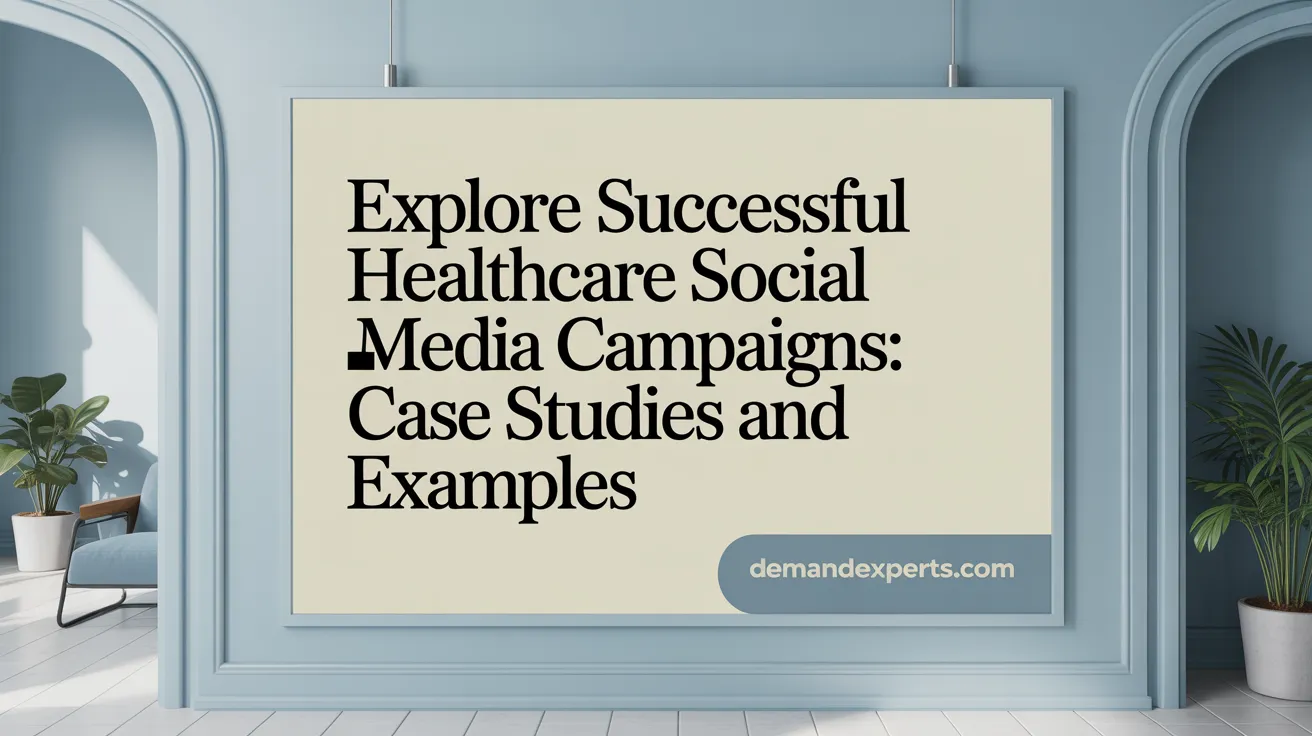
Can you provide examples or case studies demonstrating successful healthcare social media campaigns?
Various examples showcase how healthcare organizations effectively leverage social media to raise awareness and promote healthy behaviors.
One notable example is the 'Your Mind Matters' campaign, which utilized platforms like TikTok and Instagram to share recovery stories related to mental health. By engaging younger audiences through creative videos, sharing resources for free counseling, and encouraging open discussion, the campaign successfully increased awareness and reduced stigma around mental health issues.
Kaiser Permanente exemplifies inclusive storytelling through its 'Care for All' initiative. They shared multilingual patient stories and advocated for social equity, reaching diverse communities. Their focus on authentic narratives helped build trust and broaden their reach.
During the COVID-19 pandemic, the 'Vax-A-Nation' campaign targeted American Indian and Alaska Native communities to improve vaccination rates. The campaign involved tribal leaders to craft culturally appropriate messages, offered customizable outreach tools, and addressed hesitancy directly. This approach led to significantly higher vaccination uptake in these populations.
The Mayo Clinic effectively engaged audiences through personalized wellness initiatives. They developed a tailored wellness app and shared success stories and tips via social media platforms. This personalized content fostered community participation and reinforced health management.
UnitedHealthcare launched interactive health challenges on social media, encouraging users to participate in wellness activities and share their progress. These campaigns created a sense of community, boosted engagement, and promoted healthy lifestyle choices.
Overall, these campaigns demonstrate strategic use of targeted, culturally sensitive, and engaging content across various platforms, illustrating how social media can drive positive health outcomes and community involvement.
Emerging Trends and Future Directions in Healthcare Social Media Marketing Tools
What trends and future developments are shaping healthcare social media marketing tools?
Healthcare social media marketing is rapidly evolving with new technological advancements and strategic shifts. One prominent trend is the integration of artificial intelligence (AI), which enables highly personalized content delivery. AI-powered tools can analyze patient data and behavioral patterns to create tailored messaging, while chatbots provide immediate responses to inquiries, improving engagement and support.
Video marketing is increasingly dominant in healthcare campaigns. Short-form videos, live streams, and immersive augmented or virtual reality (AR/VR) experiences help humanize brands and deliver complex health information interactively. These formats capture attention effectively and foster trust.
Focusing on mobile-first and omnichannel strategies is vital, as most users access content via smartphones and prefer seamless experiences across platforms. Telehealth apps, targeted programmatic advertising, and integrated communication channels ensure accessibility and consistent messaging.
Influencer partnerships and diversified content forms are expanding, allowing healthcare brands to connect authentically with broader audiences. Collaborations with trusted voices and varied media—such as articles, infographics, and videos—boost credibility and engagement.
As privacy concerns grow, future tools will prioritize stricter compliance and more secure communication channels, safeguarding patient data in accordance with regulations like HIPAA. Real-time health sentiment monitoring will also become vital, enabling organizations to respond promptly to public concerns or misinformation.
Finally, a patient-centric approach will emphasize real-time, secure, and personalized interactions, fostering trust and satisfaction. These trends collectively aim to create digital health experiences that are more relevant, trustworthy, and accessible, aligning with evolving regulatory standards and patient expectations.
Comprehensive Tool Ecosystem Supporting Healthcare Social Media Management
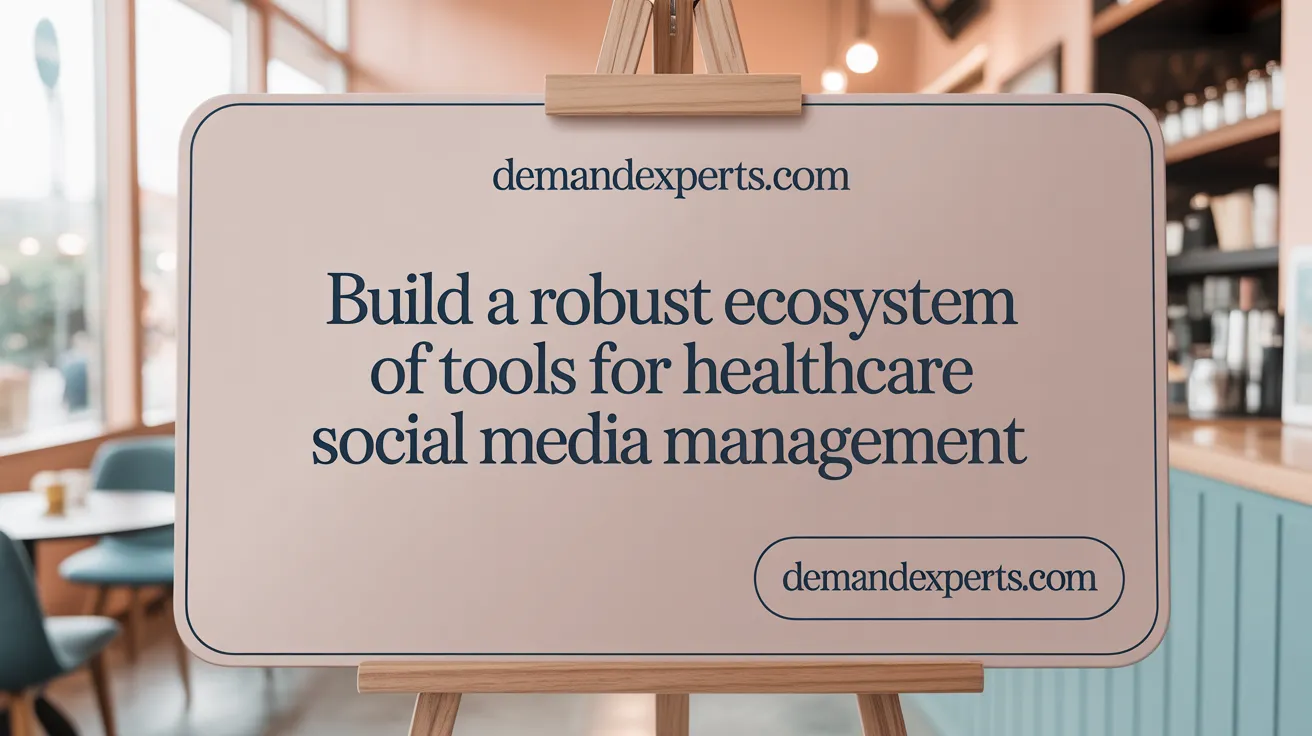
In healthcare marketing, leveraging a diverse set of social media tools enhances how organizations engage with patients and build their brand presence. Scheduling and publishing platforms like Hootsuite, Sprout Social, Buffer, and Later enable teams to plan content in advance, automate posts, and maintain consistent messaging across channels. These tools also facilitate social listening and analytics, with solutions such as Sprinklr, BuzzSumo, and Reputation monitoring brand mentions, analyzing trends, and gauging audience sentiment to refine outreach strategies.
Visual content creation is made easier with tools like Canva and Kapwing, which allow healthcare marketers to generate engaging graphics and videos quickly. This visual content helps humanize healthcare brands, educating the community effectively. Collaboration platforms like Trello and CoSchedule support planning and content approval workflows, ensuring cohesive campaigns and streamlined teamwork.
Integrating social media efforts with EHR and practice management systems delivers real-time insights into patient interactions, appointment trends, and overall campaign impact. Platforms such as SocialClimb are designed with HIPAA compliance in mind, including approval workflows and security measures that protect patient privacy while enabling targeted advertising and reputation management.
Using a comprehensive set of these tools, healthcare organizations can develop robust social media campaigns. This integration supports not just patient education and engagement but also ensures regulatory compliance, improves service promotion, and enhances overall digital strategy—making social media a vital component of modern healthcare marketing.
Maximizing Impact: Metrics, ROI, and Team Collaboration in Healthcare Social Media
Which metrics should healthcare providers track to measure social media success?
Healthcare providers should monitor several important metrics to evaluate their social media efforts. Reach indicates how many people see the content, while engagement measures interactions like likes, comments, and shares. Conversion rates reveal how many viewers take desired actions, such as booking appointments or signing up for newsletters. Online reviews also play a critical role, as they influence reputation and patient trust.
How can analytics help optimize social media campaigns?
Analytics tools provide insights into what content resonates most and identify areas needing improvement. By analyzing data such as audience demographics, posting times, and engagement patterns, healthcare marketers can refine their strategies. Continuous measurement allows teams to adapt content types, posting schedules, and platform focus to maximize results.
What role does employee advocacy and influencer collaboration play?
Encouraging staff and trusted influencers to share healthcare content extends reach and adds credibility. Employee advocacy fosters authentic communication and helps maintain compliance by ensuring that shared posts adhere to regulations. Collaborating with influencers can also boost visibility, especially when targeting younger audiences or niche communities.
How do approval workflows and compliance measures safeguard healthcare content?
Many platforms, like Hootsuite and MarketBeam, include approval workflows that streamline content review before publishing. These systems ensure content meets healthcare regulations, such as HIPAA, by requiring multiple approval stages and providing audit trails. Integrating compliance safeguards reduces risks of violations and supports legal adherence.
Why is balancing content quality and consistent posting important?
High-quality content, including informative videos and compelling graphics, builds credibility and trust. Consistent publishing maintains audience engagement and improves algorithm visibility. Developing a content calendar helps health organizations schedule diverse, educational posts regularly, fostering ongoing patient interaction.
Can you give examples of platforms suitable for different-sized healthcare providers?
Yes. Smaller practices may find SocialClimb or MarketBeam user-friendly and scalable, offering compliance features and analytics in a straightforward interface. Larger hospitals benefit from platforms like Hootsuite or Sprout Social, which support extensive team collaboration, detailed analytics, and advanced automation.
| Platform | Ideal Use Case | Suitable Practice Size | Notable Features |
|---|---|---|---|
| Hootsuite | Management, analytics, compliance | Large hospitals | Multi-user support, approval workflows, HIPAA compliance |
| MarketBeam | Social media automation, reputation management | Small to medium | Simplicity, compliance, analytics |
| Sprout Social | Content scheduling, social listening | Medium to large | Advanced analytics, team collaboration |
| SocialClimb | Healthcare marketing, targeted audience reach | Small to medium | HIPAA compliance, prediction tools, reputation management |
Effectively leveraging these tools enables healthcare organizations to enhance patient engagement, measure campaign success, and foster team collaboration—ultimately leading to better health outcomes and a stronger online presence.
Harnessing Social Media Management Tools for Healthcare Excellence
The evolving landscape of healthcare social media marketing demands tools and strategies specifically tailored to the industry's regulatory and engagement challenges. By employing purpose-built social media management platforms equipped with compliance safeguards, comprehensive analytics, and content creation capabilities, healthcare marketers can elevate their outreach and patient engagement while preserving trust and privacy. Strategic platform selection, adherence to best practices, and continuous performance evaluation empower healthcare organizations to create meaningful connections, foster community education, and adapt to emerging digital trends. Embracing these innovative tools and approaches will be crucial for healthcare providers striving to expand their digital presence and positively impact public health narratives in an increasingly connected world.
References
- Top social media tools for healthcare marketing
- The Best Social Media Platforms for Healthcare Marketing
- Hootsuite for Healthcare and Medical
- A Guide to Social Media Management for Health Brands
- SocialClimb | A Comprehensive Healthcare Marketing Platform
- 10 Healthcare Social Media marketing Ideas that Work
- Social Media Management Tools for Healthcare and ...
- 7 Types of Marketing Tools for Healthcare Businesses
Navigating the Digital Frontier of Healthcare Marketing
Healthcare organizations are uniquely positioned to leverage social media management tools tailored specifically to their industry's needs. These tools not only streamline engagement and content dissemination but also ensure strict adherence to regulatory standards. This article explores the landscape of social media management solutions designed for healthcare marketers, highlighting features, strategies, platform effectiveness, compliance considerations, successful campaigns, and emerging trends shaping the future of digital healthcare marketing.
Understanding Social Media Management Tools Tailored for Healthcare Marketing
What are social media management tools tailored for healthcare marketing?
Healthcare-specific social media management tools are specialized platforms created to help healthcare organizations effectively handle their social media presence while adhering to strict regulatory standards. These tools are designed to streamline tasks such as planning, scheduling, monitoring, and analyzing social media content.
A primary purpose of these tools is to allow healthcare providers to engage with their communities, share valuable health information, and build trust with their audiences. They include functionalities that aid in managing content across multiple platforms, ensuring that messaging complies with privacy laws like HIPAA.
Key features often include content scheduling, social listening, and analytics. Scheduling tools help organize posts to optimize timing and reach. Social listening functions allow organizations to monitor brand mentions, audience sentiment, and trending health topics, ensuring they stay responsive and relevant.
Furthermore, analytics features enable measurement of campaign performance, helping teams understand what resonates best with their audiences. Some healthcare-specific tools also incorporate compliance management, such as obtaining patient consent, moderating content, and managing secure communication channels.
Examples of tools with healthcare-focused features
Several platforms are tailored to meet the unique needs of healthcare marketing. For example:
| Tool Name | Core Features | Healthcare Focus | Additional Benefits |
|---|---|---|---|
| Hootsuite | Scheduling, social listening, analytics | HIPAA-compatible, compliance tools | Multi-layer approval workflows, ROI tracking |
| Sprout Social | Monitoring, content publishing, analytics | Patient engagement, reputation management | Integration with EHR systems, sentiment analysis |
| SocialClimb | Paid advertising, review management, compliance | HIPAA compliance, predictive targeting | Real-time KPIs, automation, multi-channel campaigns |
| MarketBeam | Campaign automation, compliance, reporting | Regulatory adherence, outreach | User-friendly interface, employee advocacy |
These tools support healthcare marketing efforts by ensuring content quality, regulatory compliance, and audience engagement. They are vital for health brands aiming to educate, inform, and connect in an increasingly digital world.
Key Features and Benefits of Healthcare-Specific Social Media Tools

What features and benefits do healthcare-specific social media management tools offer?
Healthcare organizations use specialized social media tools to navigate the complex landscape of patient privacy, regulatory compliance, and effective communication. These platforms provide robust features designed specifically for healthcare needs.
First and foremost, compliance is integral. These tools ensure adherence to regulations like HIPAA, FDA, and FTC guidelines, protecting patient data and avoiding legal repercussions. They include functionalities such as approval workflows, audit trails, and security measures that help organizations stay within legal bounds while sharing health information.
Content creation and scheduling are streamlined through user-friendly interfaces. Healthcare teams can produce engaging graphics, videos, and educational materials with tools like Canva, and plan their posting schedules ahead of time. Approval workflows allow multiple personnel to review content before publishing, ensuring accuracy and compliance.
Social listening and sentiment analysis features enable organizations to monitor conversations around their brand, track public opinion, and quickly address misinformation or health concerns. These insights facilitate timely responses, support crisis management, and help shape public health campaigns.
In addition, these tools support influencer management and crisis communication efforts. Collaborating with health influencers amplifies messaging, while rapid response features help mitigate negative publicity or misinformation.
The overall benefits extend beyond compliance and content management. Healthcare-specific tools promote higher patient engagement and trust through targeted, relevant content. They also enhance brand reputation by allowing organizations to participate actively in health conversations, share success stories, and provide valuable educational content.
| Feature | Purpose | Additional Details |
|---|---|---|
| Compliance features | Ensure legal adherence | HIPAA, FDA, FTC protocols, approval workflows, audit trails |
| Content creation & scheduling | Efficient content planning and publishing | Graphics, videos, approval processes |
| Social listening & sentiment | Monitor public conversations and track brand perception | Trend analysis, rapid response tools |
| Influencer & crisis management | Collaborate with influencers, manage emergencies | Campaign tracking, reputation control |
| Engagement & brand trust | Build relationships with patients and the community | Educational content, success stories, transparency |
By leveraging these specialized features, healthcare providers can create meaningful engagement, ensure regulatory safety, and build stronger trust with their communities.
Strategic Best Practices for Healthcare Social Media Marketing

What strategies and best practices should healthcare organizations follow for social media marketing?
Healthcare organizations can maximize their social media impact by adopting a strategic approach that combines accurate health information with engaging storytelling. Developing a comprehensive, data-driven strategy involves selecting the right platforms where their target audiences are most active, such as Instagram, TikTok, Facebook, or LinkedIn.
It is vital to ensure HIPAA compliance throughout all activities. This includes staff training on privacy rules, careful handling of patient information, and clear policies that prevent the sharing of protected health information without consent. Adding disclaimers and monitoring content regularly are also crucial to maintain regulatory standards.
Utilizing analytics tools helps healthcare marketers track campaign performance, audience engagement, and overall ROI. These insights allow continuous refinement of tactics, ensuring content remains relevant and effective.
Incorporating multimedia content like videos, infographics, and high-quality graphics enhances understanding and retention of health messages. During health crises or awareness campaigns, visual content can significantly increase reach and impact.
Engagement with patients is essential. Responding to inquiries, collecting feedback, and sharing patient testimonials humanize the healthcare organization, fostering trust and loyalty.
To measure success, organizations should track key metrics such as engagement rates, click-throughs, and conversions. This data-driven approach helps optimize campaigns for better reach and effectiveness.
In summary, a strategic, compliant, and multimedia-rich social media presence, combined with active patient engagement and continuous performance evaluation, is critical for healthcare organizations aiming to build credibility and connect meaningfully with their audiences.
Selecting Effective Social Media Platforms for Healthcare

Which social media platforms are most effective for healthcare organizations?
Healthcare organizations need to choose their social media channels based on their specific goals and target audiences. Each platform offers unique advantages that can help fulfill different communication and marketing objectives.
Facebook is a versatile tool, highly effective for local engagement and building trust within communities. It allows healthcare providers to share success stories, promote events, and manage reviews, making it ideal for fostering patient relationships.
Instagram leans heavily on visual content. It is perfect for humanizing healthcare brands by sharing images of daily operations, partner collaborations, and patient stories. Its features support engaging graphics, videos, and influencer partnerships that appeal especially to younger demographics.
LinkedIn stands out for professional networking, B2B marketing, and recruiting. It provides a platform to showcase expertise, publish research updates, and connect with industry professionals and organizations.
YouTube offers an excellent avenue for educational content, including videos explaining procedures, sharing patient testimonials, and clinician talks. This visual medium increases authority and boosts search visibility.
TikTok is rapidly gaining traction for reaching younger audiences via short-form, engaging videos focused on health tips, myth-busting, and wellness trends. It is especially effective for topics like mental health, pediatric care, or general wellness.
| Platform | Strengths | Audience Focus | Suitable Content Types | Best Use Cases |
|---|---|---|---|---|
| Local outreach, community trust, reviews | All age groups, especially adults and seniors | Stories, live videos, reviews | Patient engagement, community events | |
| Visual storytelling, humanizing brands, partnerships | Younger audiences, visual content lovers | Photos, reels, influencer collaborations | Patient stories, health tips, brand awareness | |
| Professional networking, research, recruiting | Healthcare professionals, B2B audiences | Articles, research summaries, job postings | Recruitment, industry leadership | |
| YouTube | Educational, testimonials, procedural explanations | Broad demographic, health consumers | How-to videos, patient success stories | Patient education, professional training |
| TikTok | Short, engaging health content, trends participation | Younger audiences, trend followers | Short videos, health challenges | Wellness topics, mental health awareness |
To maximize their online presence, healthcare providers should integrate these platforms into their marketing strategies by producing high-quality, targeted content tailored for each channel. Continuous analysis of performance metrics can guide content refinement, ensuring outreach efforts are impactful.
Navigating Regulatory Considerations in Healthcare Social Media Management
What are the regulatory considerations and compliance requirements in healthcare social media management?
Managing social media effectively within healthcare settings requires careful attention to various regulations designed to protect patient rights and ensure truthful communication. Central to these is HIPAA (Health Insurance Portability and Accountability Act), which mandates strict confidentiality of Protected Health Information (PHI). Healthcare organizations must ensure that no identifiable patient data, images, or details are shared without explicit consent, safeguarding patient privacy at all times.
Beyond privacy laws, healthcare entities must adhere to guidelines from regulatory bodies like the FDA (Food and Drug Administration). The FDA regulates promotional health-related content, requiring that all claims about medications, devices, or treatments be truthful and non-misleading. This involves clearly disclosing side effects, risks, and providing evidence-based information.
To navigate these complexities, establishing comprehensive social media policies is essential. These policies should cover approval workflows for content, detail responsibilities, and define procedures for monitoring activity. Staff should be trained to recognize compliance issues, privacy concerns, and the importance of transparency.
Regular audits are also vital. They help identify any lapses in compliance, such as inadvertent disclosures or misleading content. Using tools that monitor interactions and analyze content can facilitate ongoing oversight.
Furthermore, ethical considerations include authenticity, avoiding conflicts of interest, and combating misinformation. Transparency about sponsorships, partnerships, and sources of information builds trust with audiences.
In summary, effective healthcare social media management hinges on rigorous adherence to privacy, truthful content presentation, professional standards, and continuous compliance checks. These measures protect both the organization and its patients, fostering a reputable and trustworthy online presence.
Illustrative Case Studies of Successful Healthcare Social Media Campaigns

Can you provide examples or case studies demonstrating successful healthcare social media campaigns?
Various examples showcase how healthcare organizations effectively leverage social media to raise awareness and promote healthy behaviors.
One notable example is the 'Your Mind Matters' campaign, which utilized platforms like TikTok and Instagram to share recovery stories related to mental health. By engaging younger audiences through creative videos, sharing resources for free counseling, and encouraging open discussion, the campaign successfully increased awareness and reduced stigma around mental health issues.
Kaiser Permanente exemplifies inclusive storytelling through its 'Care for All' initiative. They shared multilingual patient stories and advocated for social equity, reaching diverse communities. Their focus on authentic narratives helped build trust and broaden their reach.
During the COVID-19 pandemic, the 'Vax-A-Nation' campaign targeted American Indian and Alaska Native communities to improve vaccination rates. The campaign involved tribal leaders to craft culturally appropriate messages, offered customizable outreach tools, and addressed hesitancy directly. This approach led to significantly higher vaccination uptake in these populations.
The Mayo Clinic effectively engaged audiences through personalized wellness initiatives. They developed a tailored wellness app and shared success stories and tips via social media platforms. This personalized content fostered community participation and reinforced health management.
UnitedHealthcare launched interactive health challenges on social media, encouraging users to participate in wellness activities and share their progress. These campaigns created a sense of community, boosted engagement, and promoted healthy lifestyle choices.
Overall, these campaigns demonstrate strategic use of targeted, culturally sensitive, and engaging content across various platforms, illustrating how social media can drive positive health outcomes and community involvement.
Emerging Trends and Future Directions in Healthcare Social Media Marketing Tools
What trends and future developments are shaping healthcare social media marketing tools?
Healthcare social media marketing is rapidly evolving with new technological advancements and strategic shifts. One prominent trend is the integration of artificial intelligence (AI), which enables highly personalized content delivery. AI-powered tools can analyze patient data and behavioral patterns to create tailored messaging, while chatbots provide immediate responses to inquiries, improving engagement and support.
Video marketing is increasingly dominant in healthcare campaigns. Short-form videos, live streams, and immersive augmented or virtual reality (AR/VR) experiences help humanize brands and deliver complex health information interactively. These formats capture attention effectively and foster trust.
Focusing on mobile-first and omnichannel strategies is vital, as most users access content via smartphones and prefer seamless experiences across platforms. Telehealth apps, targeted programmatic advertising, and integrated communication channels ensure accessibility and consistent messaging.
Influencer partnerships and diversified content forms are expanding, allowing healthcare brands to connect authentically with broader audiences. Collaborations with trusted voices and varied media—such as articles, infographics, and videos—boost credibility and engagement.
As privacy concerns grow, future tools will prioritize stricter compliance and more secure communication channels, safeguarding patient data in accordance with regulations like HIPAA. Real-time health sentiment monitoring will also become vital, enabling organizations to respond promptly to public concerns or misinformation.
Finally, a patient-centric approach will emphasize real-time, secure, and personalized interactions, fostering trust and satisfaction. These trends collectively aim to create digital health experiences that are more relevant, trustworthy, and accessible, aligning with evolving regulatory standards and patient expectations.
Comprehensive Tool Ecosystem Supporting Healthcare Social Media Management

In healthcare marketing, leveraging a diverse set of social media tools enhances how organizations engage with patients and build their brand presence. Scheduling and publishing platforms like Hootsuite, Sprout Social, Buffer, and Later enable teams to plan content in advance, automate posts, and maintain consistent messaging across channels. These tools also facilitate social listening and analytics, with solutions such as Sprinklr, BuzzSumo, and Reputation monitoring brand mentions, analyzing trends, and gauging audience sentiment to refine outreach strategies.
Visual content creation is made easier with tools like Canva and Kapwing, which allow healthcare marketers to generate engaging graphics and videos quickly. This visual content helps humanize healthcare brands, educating the community effectively. Collaboration platforms like Trello and CoSchedule support planning and content approval workflows, ensuring cohesive campaigns and streamlined teamwork.
Integrating social media efforts with EHR and practice management systems delivers real-time insights into patient interactions, appointment trends, and overall campaign impact. Platforms such as SocialClimb are designed with HIPAA compliance in mind, including approval workflows and security measures that protect patient privacy while enabling targeted advertising and reputation management.
Using a comprehensive set of these tools, healthcare organizations can develop robust social media campaigns. This integration supports not just patient education and engagement but also ensures regulatory compliance, improves service promotion, and enhances overall digital strategy—making social media a vital component of modern healthcare marketing.
Maximizing Impact: Metrics, ROI, and Team Collaboration in Healthcare Social Media
Which metrics should healthcare providers track to measure social media success?
Healthcare providers should monitor several important metrics to evaluate their social media efforts. Reach indicates how many people see the content, while engagement measures interactions like likes, comments, and shares. Conversion rates reveal how many viewers take desired actions, such as booking appointments or signing up for newsletters. Online reviews also play a critical role, as they influence reputation and patient trust.
How can analytics help optimize social media campaigns?
Analytics tools provide insights into what content resonates most and identify areas needing improvement. By analyzing data such as audience demographics, posting times, and engagement patterns, healthcare marketers can refine their strategies. Continuous measurement allows teams to adapt content types, posting schedules, and platform focus to maximize results.
What role does employee advocacy and influencer collaboration play?
Encouraging staff and trusted influencers to share healthcare content extends reach and adds credibility. Employee advocacy fosters authentic communication and helps maintain compliance by ensuring that shared posts adhere to regulations. Collaborating with influencers can also boost visibility, especially when targeting younger audiences or niche communities.
How do approval workflows and compliance measures safeguard healthcare content?
Many platforms, like Hootsuite and MarketBeam, include approval workflows that streamline content review before publishing. These systems ensure content meets healthcare regulations, such as HIPAA, by requiring multiple approval stages and providing audit trails. Integrating compliance safeguards reduces risks of violations and supports legal adherence.
Why is balancing content quality and consistent posting important?
High-quality content, including informative videos and compelling graphics, builds credibility and trust. Consistent publishing maintains audience engagement and improves algorithm visibility. Developing a content calendar helps health organizations schedule diverse, educational posts regularly, fostering ongoing patient interaction.
Can you give examples of platforms suitable for different-sized healthcare providers?
Yes. Smaller practices may find SocialClimb or MarketBeam user-friendly and scalable, offering compliance features and analytics in a straightforward interface. Larger hospitals benefit from platforms like Hootsuite or Sprout Social, which support extensive team collaboration, detailed analytics, and advanced automation.
| Platform | Ideal Use Case | Suitable Practice Size | Notable Features |
|---|---|---|---|
| Hootsuite | Management, analytics, compliance | Large hospitals | Multi-user support, approval workflows, HIPAA compliance |
| MarketBeam | Social media automation, reputation management | Small to medium | Simplicity, compliance, analytics |
| Sprout Social | Content scheduling, social listening | Medium to large | Advanced analytics, team collaboration |
| SocialClimb | Healthcare marketing, targeted audience reach | Small to medium | HIPAA compliance, prediction tools, reputation management |
Effectively leveraging these tools enables healthcare organizations to enhance patient engagement, measure campaign success, and foster team collaboration—ultimately leading to better health outcomes and a stronger online presence.
Harnessing Social Media Management Tools for Healthcare Excellence
The evolving landscape of healthcare social media marketing demands tools and strategies specifically tailored to the industry's regulatory and engagement challenges. By employing purpose-built social media management platforms equipped with compliance safeguards, comprehensive analytics, and content creation capabilities, healthcare marketers can elevate their outreach and patient engagement while preserving trust and privacy. Strategic platform selection, adherence to best practices, and continuous performance evaluation empower healthcare organizations to create meaningful connections, foster community education, and adapt to emerging digital trends. Embracing these innovative tools and approaches will be crucial for healthcare providers striving to expand their digital presence and positively impact public health narratives in an increasingly connected world.
References
- Top social media tools for healthcare marketing
- The Best Social Media Platforms for Healthcare Marketing
- Hootsuite for Healthcare and Medical
- A Guide to Social Media Management for Health Brands
- SocialClimb | A Comprehensive Healthcare Marketing Platform
- 10 Healthcare Social Media marketing Ideas that Work
- Social Media Management Tools for Healthcare and ...
- 7 Types of Marketing Tools for Healthcare Businesses



